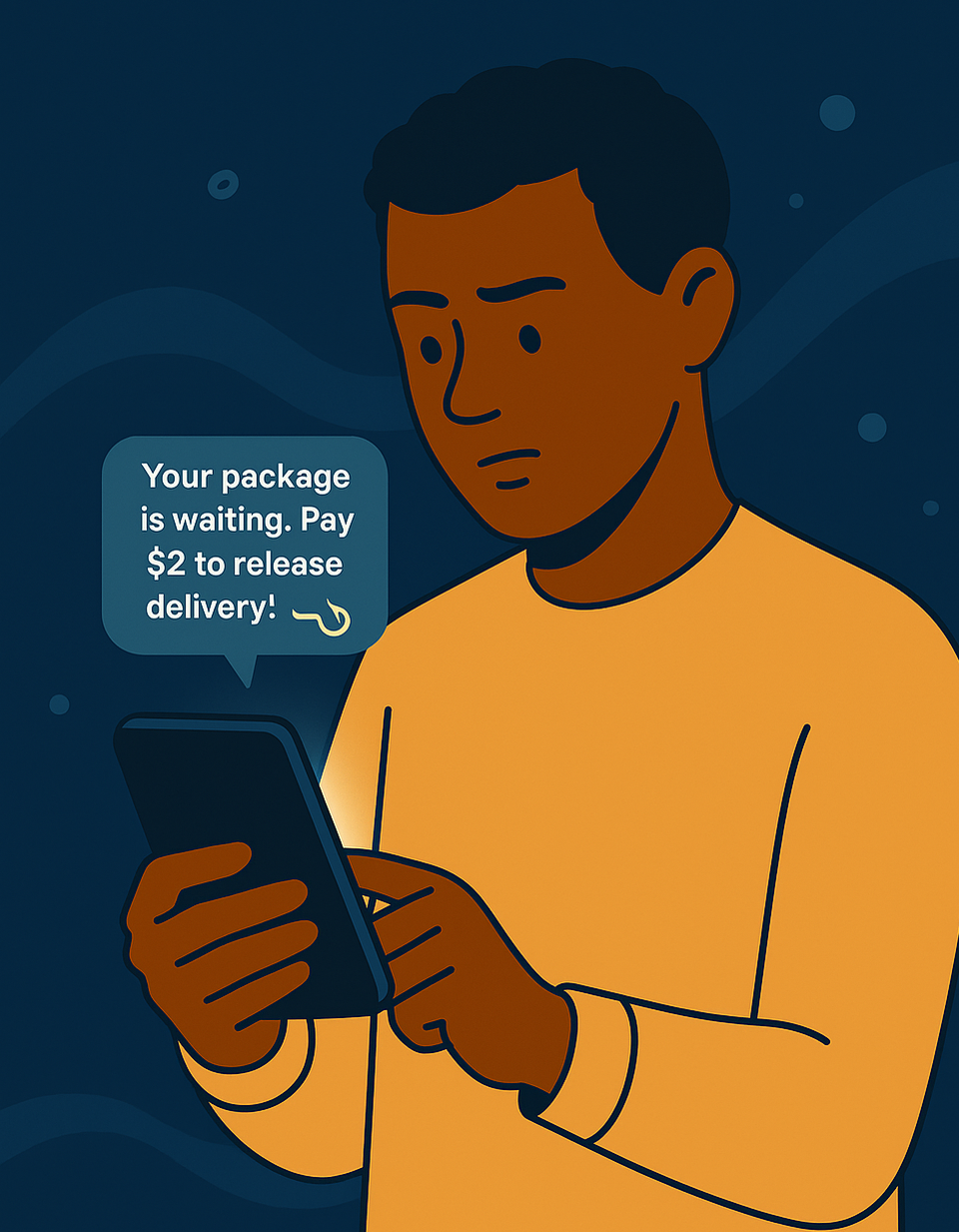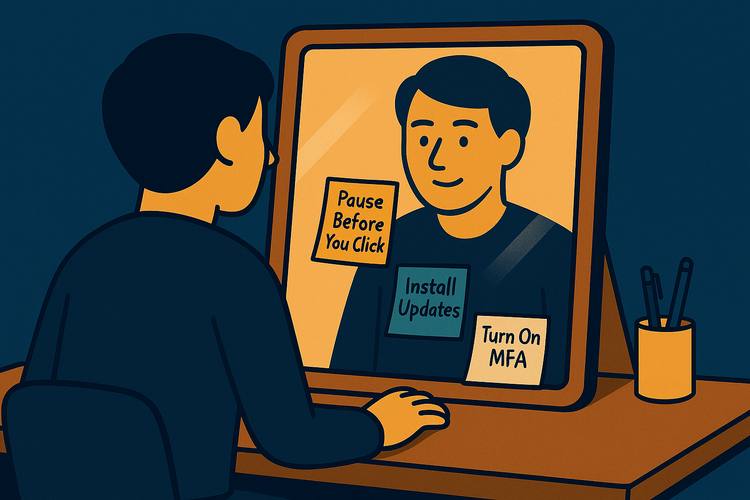Smishing: When Scams Hit Your Phone

If phishing is bait dangled in your inbox, smishing is bait sent straight to your phone.
Smishing (SMS phishing) uses text messages to trick you into giving away personal or financial information. But unlike phishing emails, smishing texts often:
- Feel more personal and urgent
- Arrive when you’re distracted, like during errands or work breaks
- Exploit the trust we place in texts as quick, direct communication
Why Smishing Works
Think about it: When you get a text, you’re more likely to read it immediately. Scammers know this. They craft short, alarming messages designed to make you act before thinking.
Common Smishing Hooks
Here are typical smishing tactics:
- Fake delivery reschedule links
- “Unusual activity” alerts from your bank
- Prize or contest win confirmations
- CRA, IRS, or government refund notices
- Random friendly messages that try to start a conversation (social engineering for long-term scams)
They’re short, urgent, and designed to get your attention fast.
But smishing isn’t just about links. Some scammers now start casual chats to build trust over days or weeks before making a move. This is often used in investment scams or romance fraud.
How to Protect Yourself
1. Pause and think.
If you weren’t expecting a delivery, bank alert, or message from this number, be cautious.
2. Don’t click links from unknown senders.
Go directly to the official app or website to check your account or delivery status.
3. Don’t reply to suspicious texts.
Even replying “STOP” can confirm your number is active – better to block instead.
4. Block the number.
If it’s clearly a scam, block the sender to prevent future texts.
5. Report smishing texts.
In Canada and the US, you can forward the text to 7726 (SPAM) if your carrier supports it. You’ll usually get a reply asking for the sender’s number if it isn’t included automatically. This helps carriers block similar attacks on their network.
If your carrier doesn’t support 7726, check their website for alternative spam reporting options.
Bottom Line
Smishing preys on urgency and the trust we place in texts.
If a text demands immediate action, payment, or personal details, treat it with caution.
Because just like phishing emails, smishing is bait – and you don’t have to bite.





